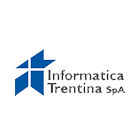Must Visit Seoul Attractions & Travel Guide
Seoul Promotional Video
Gyeongbokgung
Gyeongbokgung Palace arguably the most beautiful and remains the grandest of all five palaces is also called “Northern Palace” because it is the furthest north when compared to the neighboring palaces of Changdeokgung (Eastern Palace) and Gyeongheegung (Western Palace).
The name of the palace, Gyeongbokgung, translates in English as “Palace of Shining Happiness.” The premises were destroyed by fire at the time of Japanese occupation from 1592-1598. However, all of the palace’s 7,700 rooms were later restored under the leadership of Heungseondaewongun during the reign of King Gojong.
The National Palace Museum of Korea is located south of Heungnyemun Gate, and the National Folk Museum is located east within Hyangwonjeong.
Myeongdong
It is all about fashion, fashion & fashion in Myeongdong, Seoul’s primary & most famous shopping district. If it’s variety that you’re after, there’s no better place to shop than Myeong-dong where you’ll find everything from internationally-recognized name brands to unique items.
Myeongdong also houses a variety of family restaurants, fast food, plus Korean, Western and Japanese dining options. Many restaurants in Myeongdong specialize in pork cutlet (donkas) and kalguksu (thick noodles).
Not to forget, Myeongdong is the place where everyone shops for famous Korean Cosmetic brands such as Etude House, Skin Food, Laneige, The Face Shop, Missha!
N Seoul Tower
N Seoul Tower located on Mt. Namsan offers great panoramic views of the city, and has been a symbol of Seoul since it first opened to the public in 1980.
Not only the tower was recently undergone a major remodeling, but also a new name following a complete makeover. It is now a true cultural space with various performances, movies, exhibitions as well as upscale restaurants and snack bars.
Dongdaemun
Dongdaemun is Korea’s largest wholesale and retail shopping district has 26 shopping malls, 30,000 specialty shops, and 50,000 manufacturers. Opening from 10:30 a.m. to 5:00 a.m. except Monday & some public holidays, you can literally shop all night !!
The fabric and clothing here are of the latest fashion trends in the world. Inventory is imported and exported in real time, making Dongdaemun a must-visit for fashion enthusiastic.
Cheong Wa Dae
Cheongwadae is the executive office and official residence of the President of the Republic of Korea. The Korean name literally translates to “pavilion of blue tiles.”
The signature markings of the Presidential Residence of Cheong Wa Dae are its blue tiles. It is the first thing that catched one’s attention upon entering the premises. The blue tiles and the smooth roof blend beautifully with Mt. Bugaksan in the backdrop.
The unique buildings Cheong Wa Dae are comprised of the Main Office, Yeongbingwan (Guest House), Chunchugwan (Spring and Autumn Pavilion), Nokjiwon (Green grass), the Mugunghwa (Rose of Sharon) Valley, and the Seven Palaces.
There is also a weekly Military Drill Demonstration & Parade by the honor guards every Saturday 10am.
Bukchon Hanok Village
Situated between by two palaces, Gyeongbokgung to the west and Changdeokgung to the east, this village has the largest cluster of privately owned traditional Korean wooden homes or hanok in Seoul.
The Bukchon area is a traditional residential area in Seoul that boasts 600 years of history. Its location reflects the views of neo-Confucianism, regarding the world and nature, during the Joseon Dynasty.
Hanok architecture places great emphasis on the topographical features of the land on which it is built. Structural arrangements, layouts, and other spatial aesthetics are major concerns here, as are the styles of the buildings themselves.
Changdeokgung
Changdeokgung Palace was the second royal villa built following the construction of Gyeongbukgung Palace in 1405. The buildings have remained largely intact over six centuries and served as a backdrop for the last chapters of the Joseon period (1392-1910).
Korea’s last emperor Sunjong passed away on these grounds in 1926, and it’s commonly known that members of royal descendants lived in Nakseonjae, a cluster of unpainted palace buildings well into the late ‘80s.
The palace had a great influence on the development of Korean architecture, garden and landscape planning, and related arts, for many centuries. It reflects sophisticated architectural values, harmonized with beautiful surroundings.
Insadong
One of the most memorable Seoul attractions and represents the focal point of Korean traditional culture and crafts. Stores in Insa-dong specialize in a wide variety of goods that can only be purchased or appreciated in Korea: hanbok (traditional clothing), hanji (traditional paper), traditional teas, pottery, and folk crafts.
There are about 100 galleries in the area and you can see every example of traditional Korean fine art from paintings to sculptures. The teahouses and restaurants are the perfect compliment to the galleries.
Every Sunday from 10:00 – 22:00, some streets are blocked off from traffic and it becomes a cultural space. Stores set up booths outside and others set up shop (Korean candy merchants and fortune tellers.) There are traditional performances and exhibits as well.
Jongmyo Shrine
Jongmyo is the term used for a place where memorial services are performed for deceased kings, and Sajik is the term for a place where services for the Gods of Earth and Crops are performed.
The Shrine is the oldest and most authentic of the Confucian royal shrines to have been preserved. Dedicated to the forefathers of the Joseon dynasty (1392–1910), the shrine has existed in its present form since the 16th century and houses tablets bearing the teachings of members of the former royal family.
Ritual ceremonies linking music, song and dance still take place there, perpetuating a tradition that goes back to the 14th century. It enshrines the memorial tablets of greatly honored kings and their queens, today containing 19 memorial tablets of kings and 30 tablets of their queens in 19 spirit chambers.
Namiseom Island ( Winter Sonata )
For Korean Drama lovers, Nami Island is a place which does not requires further introduction as this is the birth place of all the Korean Craze. This is one of the place where the famous international Korean Drama Winter Sonata was filmed. Hence to put it short, it is a must visit for all Asian tourists!
Namiseom Island was formed as a result of the construction of the Cheongpyeong Dam. It is a half moon shaped (462,809㎡) isle, and on it is the grave of General Nami, who led a great victory against the rebels in the 13th year of the 7th king of the Joseon Dynasty, King Sejo (reign 1455 ~ 1468).
Lotte World
Lotte World consists of the world’s largest indoor theme park (a Guinness World Record) which is open all year around, an outdoor amusement park called “Magic Island”, an artificial island inside a lake linked by monorail, shopping malls, a luxury hotel, a Korean folk museum, sports facilities, and movie theaters all in one place.
Opened on July 12, 1989, Lotte World a major theme park complex in Seoul, South Korea, receives over 8 million visitors each year and is considered along with Tokyo Disney Resort as one of the world-class theme parks in Asia.
One of the major reasons tourists are attracted to Lotte World is the amusement rides. The Gyro Drop and Gyro Swing are the top pleasers– a steep drop with an altitude of 70 meters, or taste the thrilling sensation of being inside a tornado.
The Flume Ride is a long boat with a high-altitude wave, and the Spanish Pirate Ship swings at an electrifying 75 degrees. Besides the excitement of these rides, Lotte World also contains a variety of parades and laser shows.








































